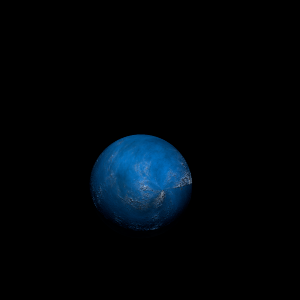|
|
Space Astro
|
Info for exoplanet "Geait Gaapus"
| Scientific (actual) data |
|---|
| Name | Kepler-62 d |
| Planet status | Confirmed |
| Planet mass | 0.044 |
| Radius | 0.174 |
| Orbital period | 18.1641 |
| Semi major axis | 0.12 |
| Inclination | 89.7 |
| Discovered | 2013 |
| Updated | 2021-02-05 |
| Tconj | 2455010 |
| Tzero tr | 2455010 |
| Impact parameter | 0.22 |
| Temperature (kelvin) | 510 |
| Publication | Published in a refereed paper |
| Detection type | Primary Transit |
| Alternate names | 2MASS J18525105+4520595 d, K00701.01, KIC 9002278 d, KOI-701 d, KOI-701.01, WISE J185251.03+452059.0 d |
| Star name | Kepler-62 |
| Right ascension | 283.21° |
| Declination | 45.35° |
| Mag v | 14 |
| Mag j | 12.256 |
| Mag h | 11.739 |
| Star distance | 368 |
| Star metallicity | -0.37 |
| Star mass | 0.69 |
| Star radius | 0.64 |
| Star sp type | K2 V |
| Star age | 7 |
| Star temperature | 4925 |
| Star alternate names | 2MASS J18525105+4520595, KIC 9002278, KOI-701, WISE J185251.03+452059.0 |
| Wikipedia article | Kepler-62 d |
Back
| |
| Fictional info (?) |
|---|
| Suggested name | Geait Gaapus |
| Planet type | Terrestrial |
| It has the densest atmosphere of the terrestrials, consisting primarily of water.
The volume of water detected has been estimated to be equivalent to the volume of water in the Black Sea. |
| Estimated population | 24000000000 |
| Atmosphere | Water | 86% |
| Carbon dioxide | 13% |
| Methane | 0.11% |
| Oxygen | 0.0042% |
| Atmospheric pressure | 16 bar |
 |
| No known satellites |
| Google search for Geait gaapus |
|
Website by Joachim Michaelis
|
|
|
|